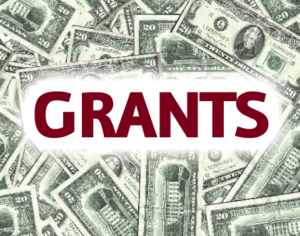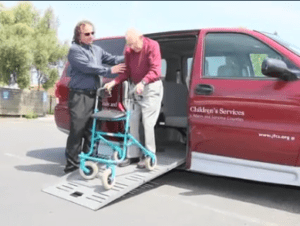
Preparation, precise implementation, powerful content, perseverance and follow through all matter.
There are some basic strategies that ensure a successful nonprofit grants program.
They’re surprisingly straightforward.
If you follow this formula, you’ll succeed.
But you’ve got to be methodical, detail-oriented and focused.
Grantsmanship is not an “I’ll just wing it” proposition.
Applying for grants is hard work.
You must:
- Prepare
- Implement with precision
- Include data and stories that compel
- Persevere and follow through
Let’s take these one at a time.
I. Preparation
1. Develop your list of projects that need funding.
Once you have a clear sense of what you’re looking for, you’re much more likely to find it. For example, let’s say you’re a low-income legal services nonprofit. If you don’t develop a projects list, you might only research funders who give to legal services. However, if you determine that your priority initiatives for funding this year are legal services for at-risk seniors and veterans, you can broaden your search to funders who support senior and/or veterans services.
2. Research foundations that support those types of projects.
Don’t think you can write one generic proposal and send off duplicates to a bunch of different foundations. You’ll need to do research to tailor your proposal.
Look first at field of interest. Some foundations focus on education. Others on human services. Others on the arts, the environment, international causes, and so forth.
Next look at types of funding. Some foundations give only to project support. Others give to operating support. Some will give capacity building grants for infrastructure. Some will give to capital or endowment campaigns.
Next look at grant range size. If the foundation never gives more than $5,000, it might not be a good match for your $50,000 project.
Now narrow your list. Look for foundations that give in both your cause’s field of interest and your desired project area. And be sure the amount you’re requesting falls within their grant range. Foundations don’t like it when you don’t do your homework.
3. Get in the door.
First take a look at the guidelines. Many foundations welcome a call from you or a board member prior to submitting your application, but some explicitly prohibit this. Make sure you know before you trip up. If there’s no prohibition, by all means call the grantor before you craft a letter of intent or proposal. Invite them for a site visit. Funders can be super helpful in helping you shape a request, and they’ll be more likely to favorably entertain your proposal if they’ve had a hand in its creation. To find out whether any of your leaders have connections to your prospective funders, distribute a list with names of officers and trustees and ask your staff and board who they know.
Check out where to find grants for your nonprofit organization. Also check out all the great resources of the Foundation Center.
II. Precise Implementation
1. Pay attention to the guidelines.
They’re there for a purpose. And, believe it or not, part of that purpose is so you don’t waste your precious time. There’s no point in submitting an application that will never be read.
2. Follow all instructions.
Whatever they say, do it. Whatever they ask for, give it to them. They didn’t write instructions only for you to ignore them. There’s no excuse in the funder’s mind for not paying close attention to what they want. It just looks sloppy. If you need clarification, call and ask them (unless they explicitly state they don’t accept phone calls, in which case write to them).
III. Powerful Content
My grant writing best practice advice is to use a 4-step framework for your proposal. Do these four simple things well, and you’ll be surprised how far they’ll take you!
1. Need in the Community
Demonstrate the existence of the need with data and research to establish credibility and authority and engage the funder’s head. If you’re a local nonprofit, use local (not national) data. Here are some snippets from proposals I’ve written in the past that demonstrate the need.
Needs of frail seniors:
West Bay seniors cite transportation as their greatest unmet need. 22% of the Bay Area’s Jewish population is seniors. The 2004 West Bay Jewish Community Study found that over 40% of those needing help with transportation had not received it. – Senior Transportation Fund, Jewish Family and Children’s Services
Needs of hungry children:
Hunger manifests itself as a consistent lack of enough food to meet nutritional requirements. It can mean fewer meals each day and poor-quality food that is calorie-rich but nutrient-poor. 1 in 4 children in our community do not have access to enough food to meet their nutritional needs on a regular basis. – Children’s Healthy Snack Program, San Francisco Food Bank
2. How You Address That Need
It’s also a good idea to tell a bit of a story that engages the funder’s heart. Here are some examples from successful proposals I’ve written in the past that show how the need will be addressed.
Addressing need for heat:
Many years ago, the San Francisco Conservatory of Music where I worked needed a new boiler. I wrote a grant proposal so we could buy one. Sounds dry as dust, but I told a story. A story about real people. You see, the violinists need to have warm, supple fingers in order to expertly bow their instruments. Without a working boiler, we had no hot water. So they couldn’t go run their hands under the sink before a performance. Their stiffness made their playing stiff. They were paying thousands of dollars to train to become the musicians of tomorrow, yet they were swaddled in mittens while attempting to play sensitive instruments. Can you imagine how that might feel? Apparently the foundation to which we applied could – we got $50,000!
Addressing need for food:
When working at the San Francisco Food Bank, staff running school-based biweekly food pantries noticed teachers were collecting left-over food towards the end of the day and squirreling it away in their classrooms. They asked why. Teachers explained many of the school’s students, 50% of whom qualified to receive free or reduced-price meals, came to school hungry. They’d often fall asleep in class or be unable to focus. Teachers wanted the food to give their kids snacks, because hunger shouldn’t be a hindrance to learning. In response, the Food Bank developed a pilot healthy snack program. A key was getting the kids to accept the low-sugar, low-fact foods. Selections were continually tested at sites, and student food preferences were noted to assure acceptance of the program. For example, while students refused to eat plain raw carrots, they were delighted by carrot sticks that could be dipped in peanut butter. Fresh oranges, bananas, apples, whole grain products, low-fat, nutrient-dense granola bars, nut butters, low-fat cheese, and milk were also hits.
3. What it Costs
Once you’ve connected the demonstrated need and how you’ll address it to the funder’s guidelines/priorities, it’s time to get down to your budget. Tell your funder what your proposed project will cost. Include all the costs so they can see the big picture, including salaries and other administrative expenses. They’re looking at your plan with a critical eye, and want to see that you’re being thoughtful and realistic. In preparing your budget, be sure to include how you’ll develop sustainability moving forward. This should include letting them know about other funders to whom you’re applying, plans for individual fundraising to support the project, earned income you anticipate, and a timeline.
4. How the Funder Can Help (specific project and cost)
Be specific about what their grant will cover. For example, $10,000 will pay for fuel, maintenance and insurance costs for a van. Or $15,000 will pay for monthly taxi rides for 20 low-income seniors to critical medical appointments. Or $17,000 will pay for a half-time driver @ $18 per hour who will drive clients requiring some assistance to appointments and provide door-to-door escort service. In deciding what to ask your funder to pay for, take a look at past grants they’ve made. And also take the opportunity to run alternatives by them over the phone.
IV. Perseverance and Follow through
1. All fundraising is about building trust.
If you don’t get a “yes,” it may just be because they don’t know and trust you yet. The first time you apply to a funder, you’re less likely to get funded. That doesn’t mean you should give up. A “no” today may be a “yes” tomorrow… provided you continue building the relationship. I always call a funder, or send out what I call my “thanks for the rejection” letter, to try to find out why we were denied. This is the very best way to set yourself up for success the next time. You’ve got to play the long game.
2. Keep building the relationship.
If you do get the grant, follow through is mandatory. Not only must you report back to them on outcomes (again, it’s essential to follow their instructions); you must also treat your funder like you would any major donor. Thank, recognize, honor and love them whenever and wherever you can. They’re people. You can get a basic grant report template here.
Would you add any other tips? If so, please add them in the comments section below.






Organizations must also be careful and on point when preparing financial reports for grantors. They may be requested monthly or quarterly sometimes requiring back-up documentation such as cancelled checks and invoices. Make sure your expenses are allocated properly to each grant so you don’t run the risk of having funds pulled back from you.
Great point! I also advocate for bringing your program staff into the process early on. Make sure the folks responsible for collecting the data you need to send back to the grantor are aware of this fact and have systems in place to collect the necessary information.
thanks for your help